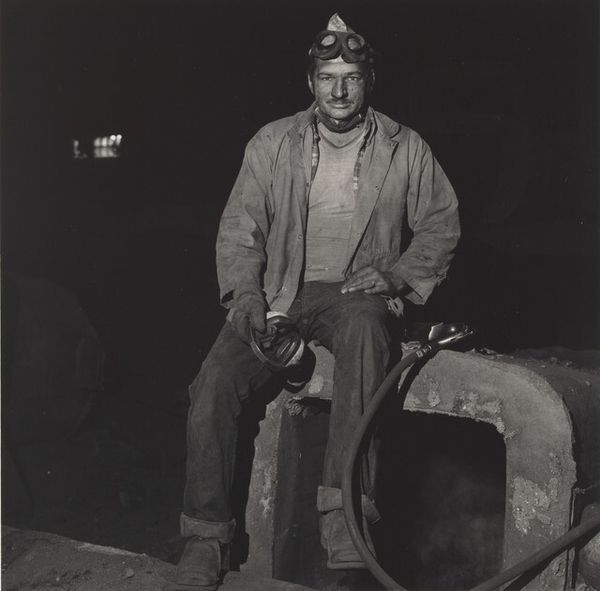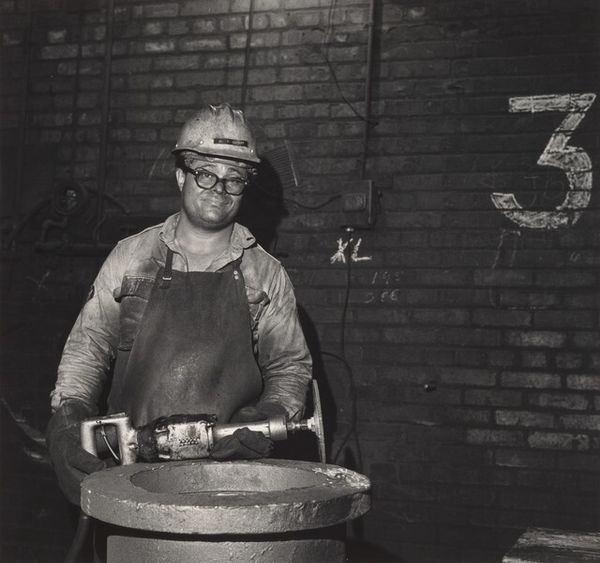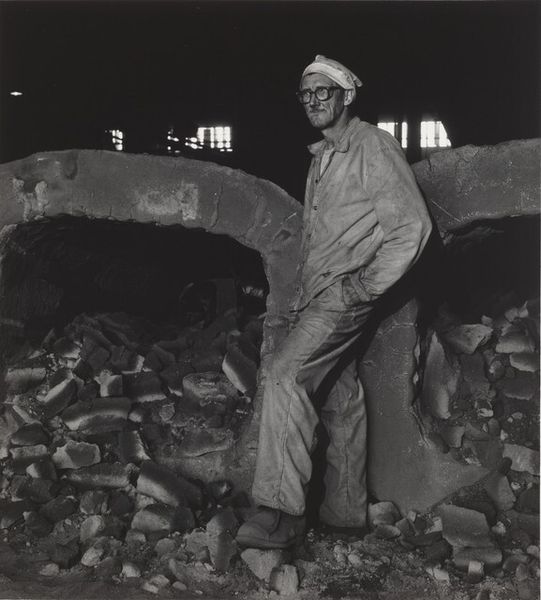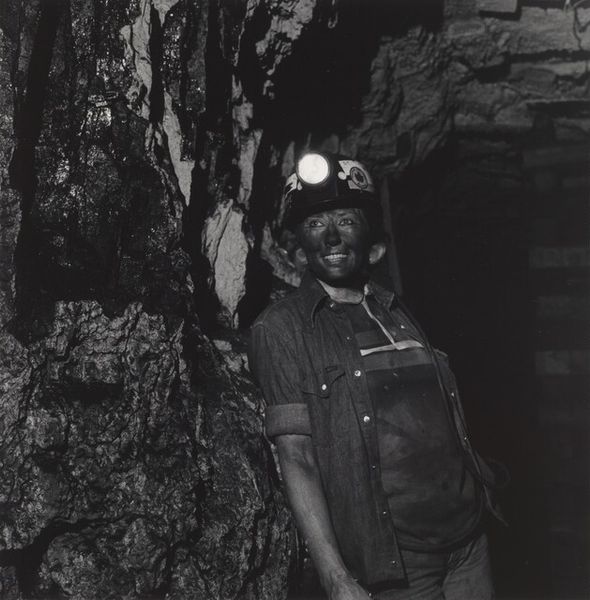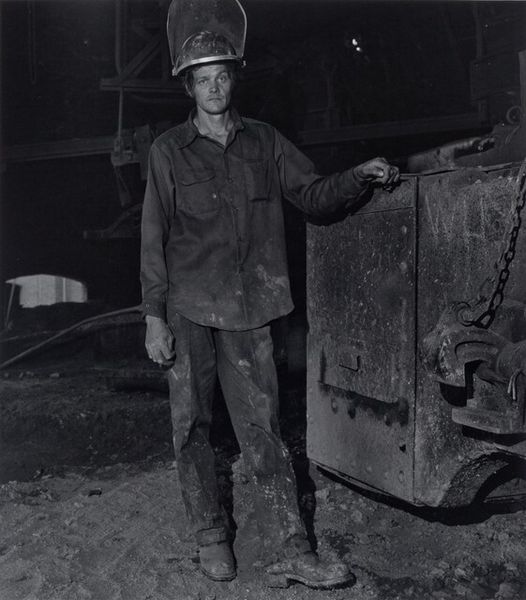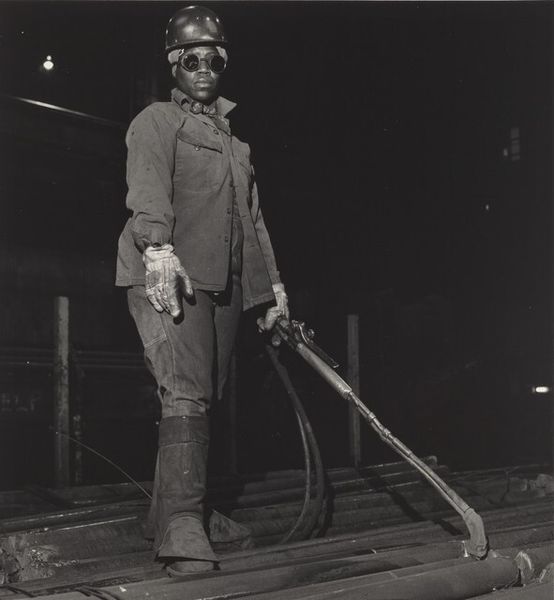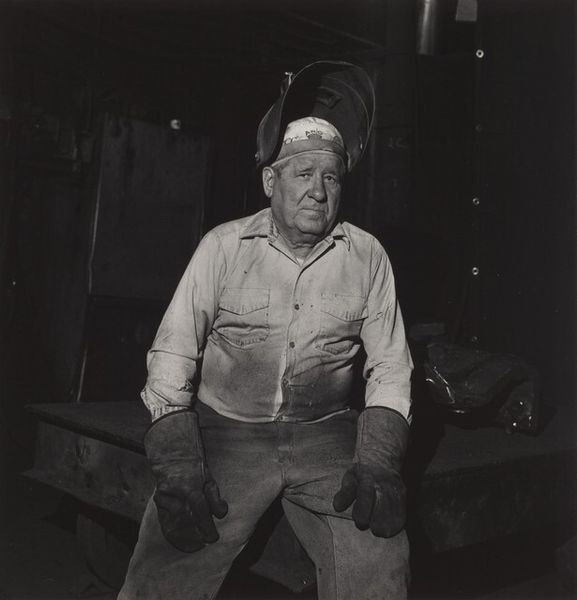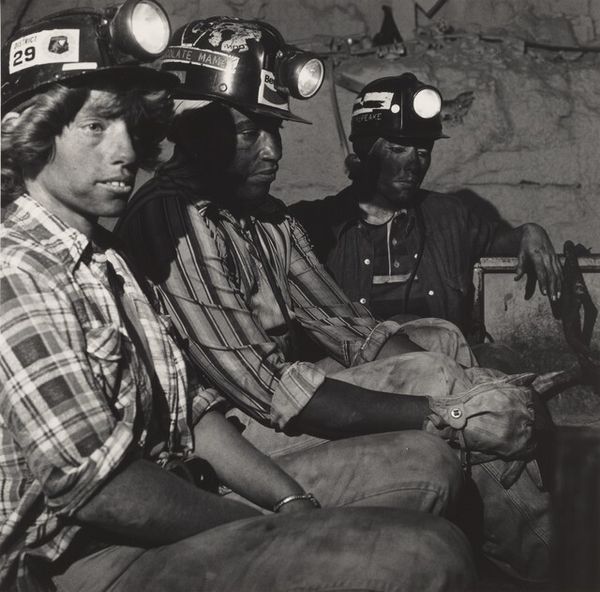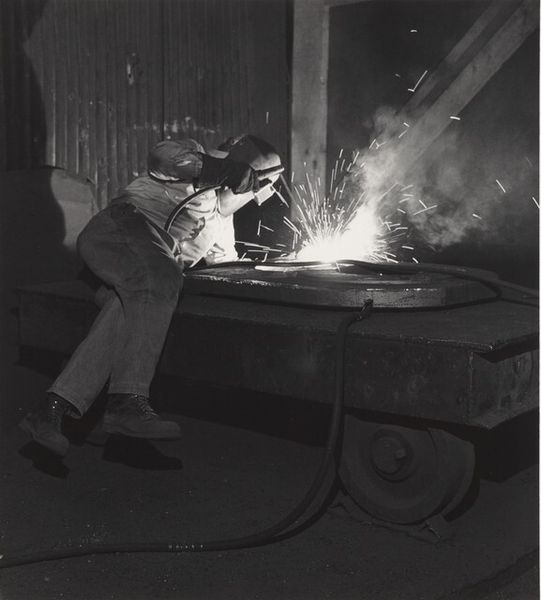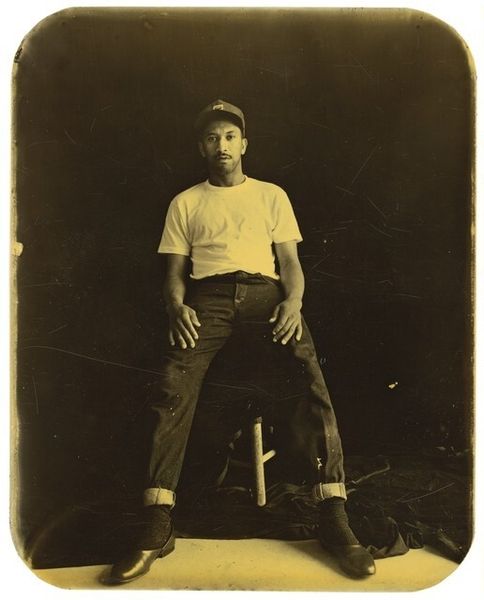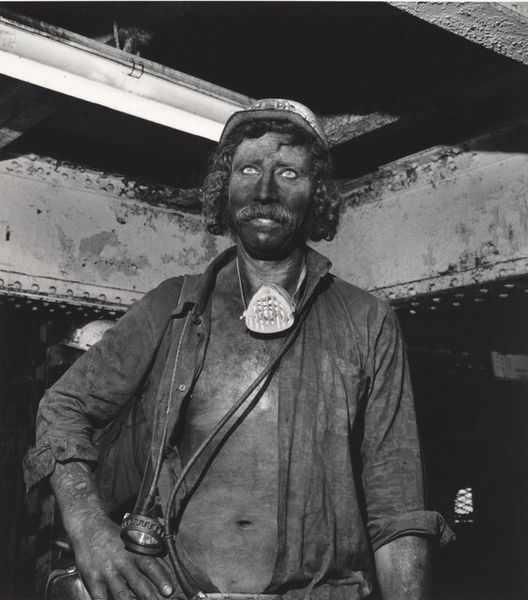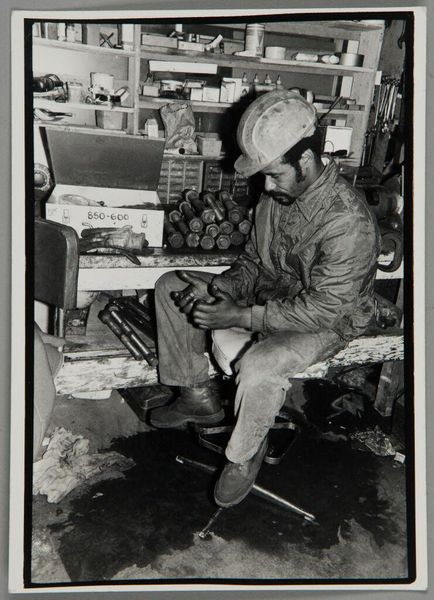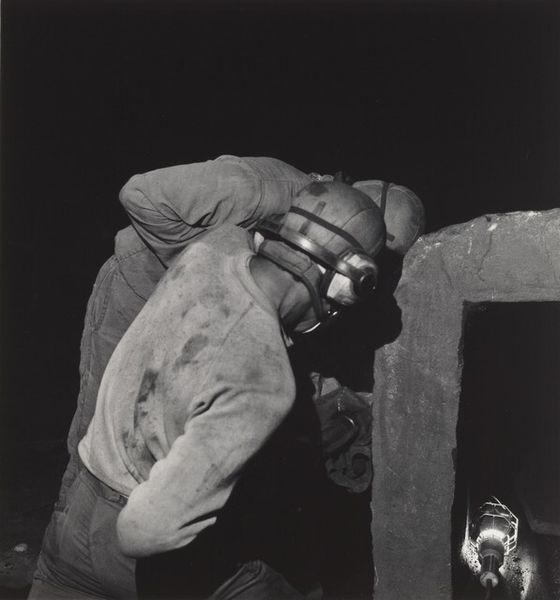
photography, gelatin-silver-print
#
black and white photography
#
cool tone monochrome
#
centre frame
#
black and white format
#
monochrome colours
#
social-realism
#
b w
#
photography
#
black and white theme
#
black and white
#
gelatin-silver-print
#
monochrome photography
#
monochrome
Dimensions: image: 18.3 x 17.1 cm (7 3/16 x 6 3/4 in.) sheet: 25.2 x 20.4 cm (9 15/16 x 8 1/16 in.)
Copyright: National Gallery of Art: CC0 1.0
Curator: The monochrome tones in this image lend a powerful simplicity. I’m immediately struck by the texture; the rough-hewn timber behind this individual, the sturdy plaid shirt. There’s an undeniable weight and solidity conveyed. Editor: Indeed. This is a gelatin-silver print entitled "Appalachia (Working People series)" by Milton Rogovin, dating from 1981. It belongs to a series focusing on labor and community, documenting the lives of working-class individuals in their environments. Curator: The light on the face, the shadow of the coal dust; there’s a clear, almost confrontational gaze. But beyond the immediate impression, I think Rogovin is also using the miner's helmet, as an object, a beacon perhaps? Or is that too literal? Editor: Not necessarily. The helmet serves as a symbolic object of labour, of course, a cultural marker signifying both protection and a potential site of danger. The ’29’ on the front... likely an identifier in the mine itself, but transformed, within the composition, into a potent and enigmatic emblem of this particular individual’s place in a much larger, historical system. It subtly acknowledges this subject’s unique existence but within structural inequalities. Curator: And framing that face, which itself tells a story. The weathering and wear suggest resilience but also speaks of risk, of hard choices made to make ends meet. Rogovin makes us ask, how is identity formed in this harsh environment? It serves almost as a study of perseverance in the face of struggle. Editor: Exactly. Rogovin's work consistently grapples with these sorts of tensions. Consider how such projects—photographic documentation focusing on the everyday—become forms of advocacy in the context of the 1980s. They operate as an alternative to dominant visual narratives of that decade and actively work to valorize people too often ignored by society. The politics of representation here, as always, remain critical. Curator: Looking at this, it makes me consider those symbols and signs that we assign or adopt as identities. Ultimately, Appalachia as an idea gets imbued with its humanity here. Editor: A crucial act of reclamation—giving power back to a specific vision of a time.
Comments
No comments
Be the first to comment and join the conversation on the ultimate creative platform.
